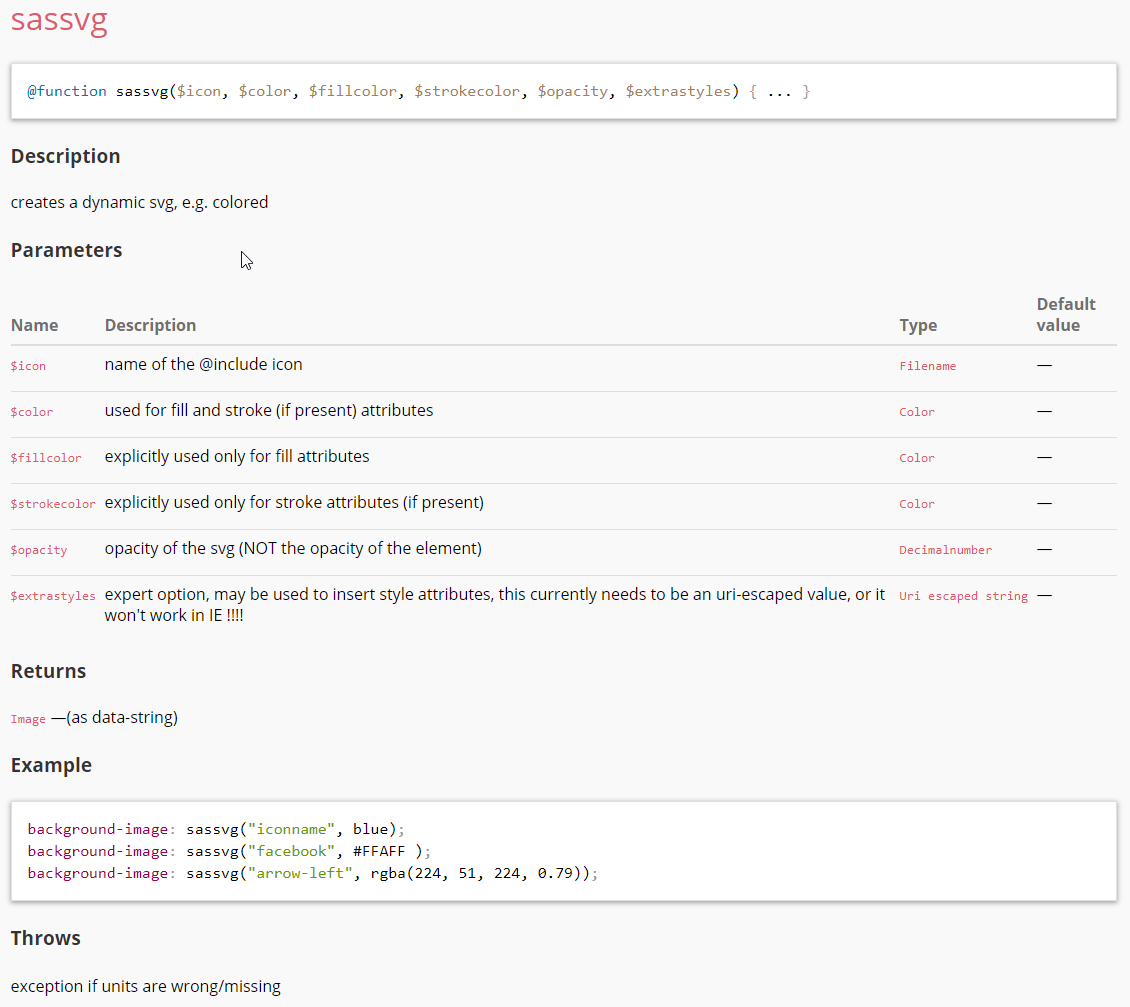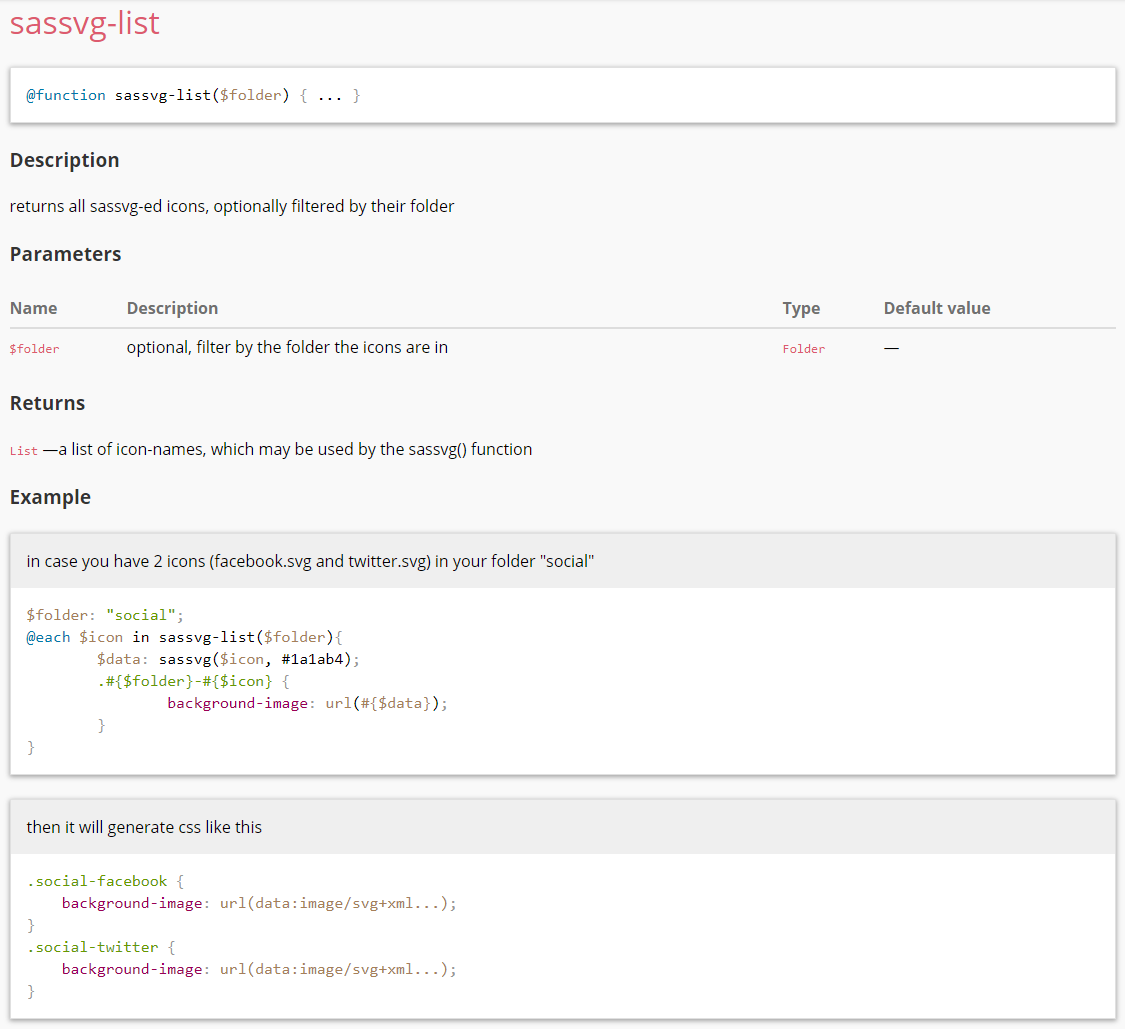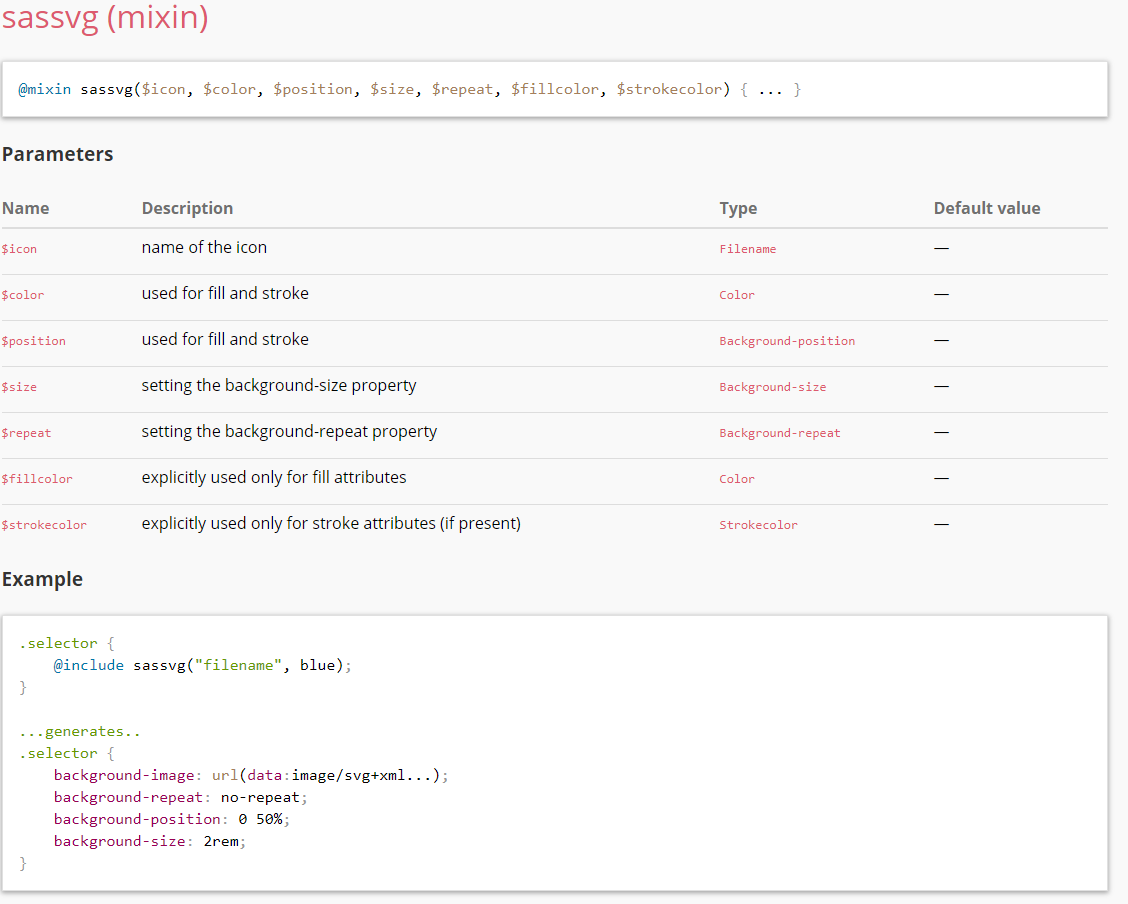gulp-sassvg
How to use
Install
npm install gulp-sassvg --save-dev
In your gulpfile.js
var sassvg = require('gulp-sassvg');
gulp.task('sassvg', function(){
return gulp.src('./path/to/images/folder/**/*.svg')
.pipe(sassvg({
outputFolder: './sassvg/', // IMPORTANT: this folder needs to exist
optimizeSvg: true // true (default) means about 25% reduction of generated file size, but 3x time for generating the _icons.scss file
}));
});
@import "_sassvg.scss;
.selector {
background-image: sassvg('filename');
}will generate
.selector {
background: url('data:image/svg+xml;utf8,<svg ...> ... </svg>');
}@import "_sassvg.scss;
.selector {
@sassvg('filename');
}will generate
.selector {
background: url('data:image/svg+xml;utf8,<svg ...> ... </svg>');
background-position: 50%;
background-size: 2rem;
}Documentation
Documentation may be generated using sassdoc. Otherwise, just read the _sassvg.scss file, should be clear how to use the provided sassvg() and the sassvg-list() functions. Here are some screeenshots of the essential sassdoc parts:
FAQ
Browser support IT works in every browser supporting SVGs (basically IE9+ and Android 3+), detailled information may be found here: http://caniuse.com/#search=svg
Performance? Sassvg is blazingly fast. It's approximately 0.1ms/icon with libsass. So even if you have 100 different icons, the you will see the result after about 0.08-0.12 seconds.
What about the File Size? Make sure you serve the CSS-File gzipped (which should be standard nowadays on every server). Then your transfered file-size will be even lower than if you would serve them "normally" by referencing the background-images via url. How?
We uri-encode the SVGs, instead of base64-encoding them. Therefore the gzip-compression may do its magic when dealing with similar files. E.g. if you have an SVG, which you SASSVG in 2 different colors, the generated CSS will look like:
.selector {
background-image: url('data:image/svg+xml;utf8,3Csvg%20fill%3D%22FIRSTCOLOR%22...');
}
.selector:hover {
background-image: url('data:image/svg+xml;utf8,3Csvg%20fill%3D%22SECONDCOLOR%22...');
}As the Strings will be VERY similar (except some color values), the gzip-compression may drastically reduce the file size, even much lower as if you would reference 2 external SVGS.
Why does this plugin create so many sassvg-iconname functions? Due to performance reasons. I've tested all possibilities to create dynamic SVGs with SASS (one huge map in a mixin, assembling the SVG from single strings, str_replace the dynamic parts) and this solution scales (by far) best! Adding some hundred icons is no problem :-)
Does sassvg work with libSass LibSass is even encouraged for best performance, but it works with RubySass or DartSass as well.


